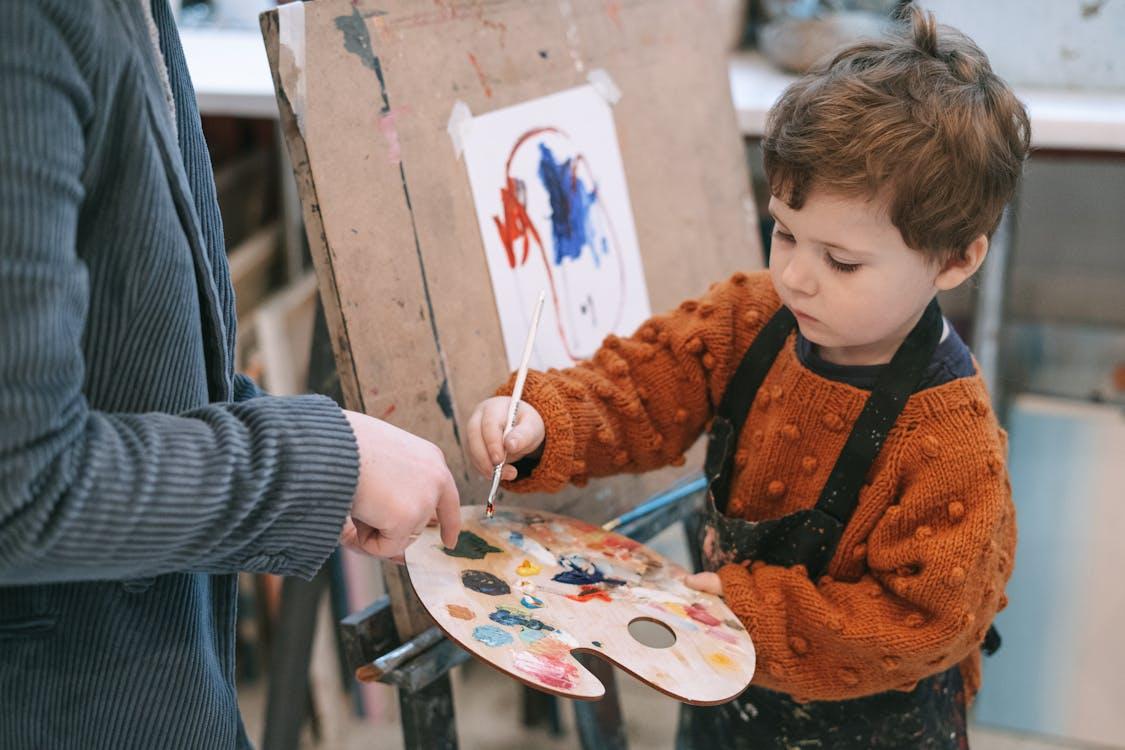 Source
Source
Arts and music are more than just extracurricular activities—they are essential components of a well-rounded education. Early exposure to these disciplines provides children with tools to express themselves, explore their creativity, and develop critical skills that benefit them for a lifetime. From fostering emotional growth to enhancing academic abilities, the impact of arts and music education is profound.
As the world becomes increasingly interconnected and competitive, it’s vital to provide children with opportunities to think creatively and engage meaningfully with their surroundings. Early exposure to arts and music helps them build confidence, develop discipline, and cultivate an appreciation for diverse perspectives, laying the groundwork for personal and professional success.
Let’s explore this in detail below:
Role of Educators in Arts and Music Education
Educators play a critical role in introducing children to arts and music, acting as guides who inspire curiosity and creativity. A well-trained teacher doesn’t just teach techniques; they spark interest and help students explore their unique potential. Many educators pursue advanced degrees to deepen their expertise and refine their teaching methods. Programs like an online master’s in art, music or physical education provide them with the tools to design impactful curriculums, adapt to different learning styles, and integrate arts and music into broader educational frameworks.
Online programs, in particular, offer flexibility for aspiring teachers juggling other responsibilities. These programs combine the convenience of remote learning with high-quality coursework, equipping educators with both theoretical knowledge and practical skills. Graduates of these programs bring modern approaches to the classroom, fostering innovation and inclusivity in arts and music education. Their training allows them to create engaging experiences that help children discover and develop their talents.
Boosting Cognitive Development Through Arts and Music
Arts and music are powerful tools for cognitive development, especially when introduced at an early age. Learning music, for instance, activates areas of the brain associated with memory, attention, and problem-solving. Playing an instrument strengthens fine motor skills while also reinforcing patterns and mathematical thinking. Similarly, visual arts activities like drawing or sculpting enhance spatial reasoning and improve the ability to visualize concepts—a skill that’s valuable across academic disciplines.
Research consistently shows a connection between arts education and better academic performance. Studies have found that students who engage in music or art programs perform potentially better in math and reading. This isn’t just about numbers on a page—it’s about how creative practices stimulate critical thinking and encourage students to connect ideas in new ways. Introducing arts and music at a young age gives children cognitive tools that benefit them throughout their education and beyond.
Encouraging Emotional Expression and Resilience
Arts and music provide a safe outlet for children to explore and express their emotions. Whether it’s through drawing, playing an instrument, or writing a song, creative activities allow children to process feelings that they may struggle to articulate in words. This kind of expression helps build emotional intelligence, teaching children how to identify, understand, and manage their emotions in healthy ways.
In addition to fostering self-expression, arts and music also build resilience. Facing challenges, such as mastering a new technique or learning a complex piece of music, teaches perseverance and patience. These lessons extend beyond the classroom, helping children approach difficulties in life with confidence and determination. Early exposure to these disciplines nurtures emotional growth in a way that few other subjects can.
Building Social Skills and Teamwork
Arts and music education isn’t just about individual growth—it’s also a fantastic way for children to learn how to work with others. Activities like joining a school choir, participating in a band, or collaborating on a group art project teach valuable teamwork skills. Such experiences help children understand the importance of listening, sharing ideas, and respecting different perspectives.
Being part of a creative group fosters a sense of belonging and helps children develop strong communication skills. For example, playing in an orchestra requires coordination and trust among all members, as each part contributes to the harmony of the whole. Lessons in collaboration and empathy translate to other areas of life, preparing children to navigate social and professional relationships with confidence and understanding.
Fostering Creativity and Critical Thinking
Creativity is at the heart of arts and music education. Painting, composing, or improvising encourages children to think beyond the obvious and explore new possibilities. These activities teach them to approach problems with flexibility and an open mind, skills that are crucial for critical thinking.
Early exposure to creative disciplines also helps children develop innovative solutions to challenges. For instance, designing a piece of artwork involves choices about colors, shapes, and composition—decisions that require thoughtful analysis and experimentation. Such problem-solving skills become second nature over time, giving children an edge in academics and future careers.
Promoting Cultural Awareness and Diversity
Arts and music education opens the door to a world of cultural exploration. Learning about different musical styles, artistic traditions, or historical movements helps children appreciate the richness of diverse cultures. It’s an engaging way to build empathy and understanding, fostering a global perspective from an early age.
For example, a music class might explore rhythms from Africa or melodies from Asia, while an art lesson could focus on Indigenous painting techniques or European masterpieces. These experiences broaden children’s horizons and encourage them to celebrate differences. Early exposure to cultural diversity through arts and music cultivates curiosity and respect that benefits them throughout their lives.
Early exposure to arts and music education shapes children in profound and lasting ways. From improving cognitive abilities and fostering emotional growth to building social skills and promoting cultural awareness, these disciplines play a vital role in developing well-rounded individuals. Encouraging arts and music in education isn’t just about creating future musicians or artists—it’s about nurturing critical thinkers, empathetic individuals, and creative problem-solvers. Investing in these programs means investing in a brighter, more innovative future for every child.
 Cook on HIGH another 2 hours.
Serve warm and enjoy.
Cook on HIGH another 2 hours.
Serve warm and enjoy.











